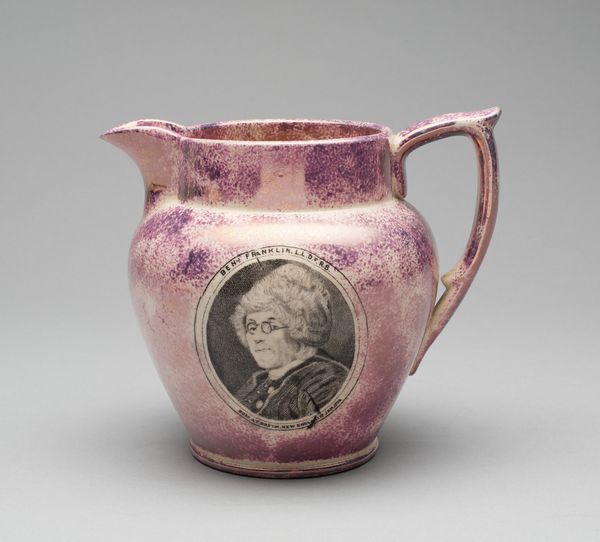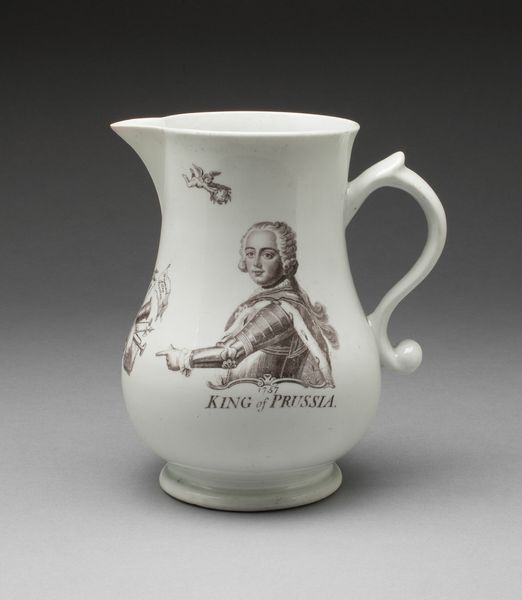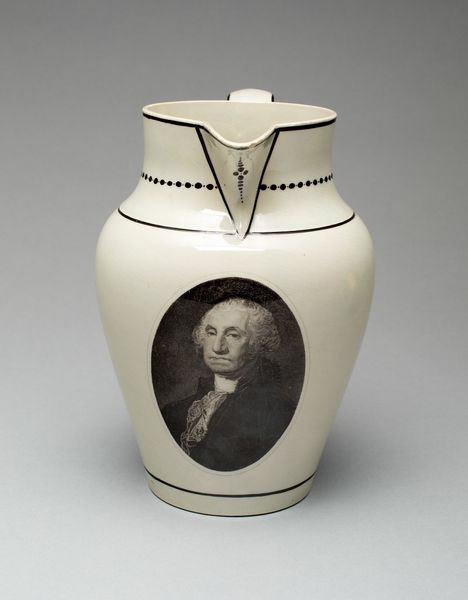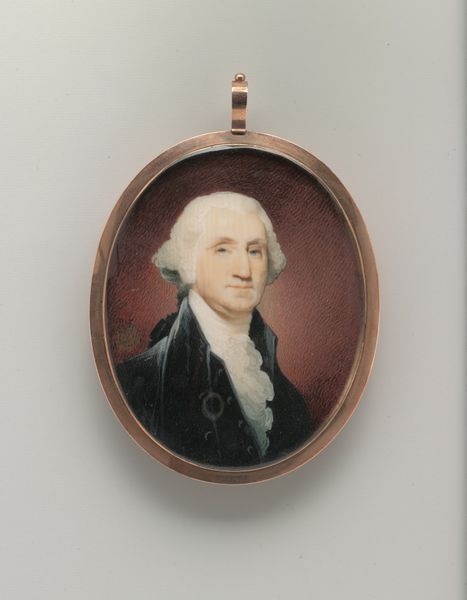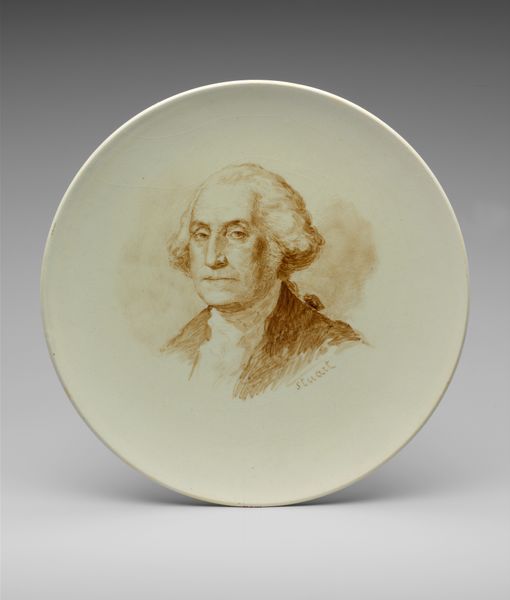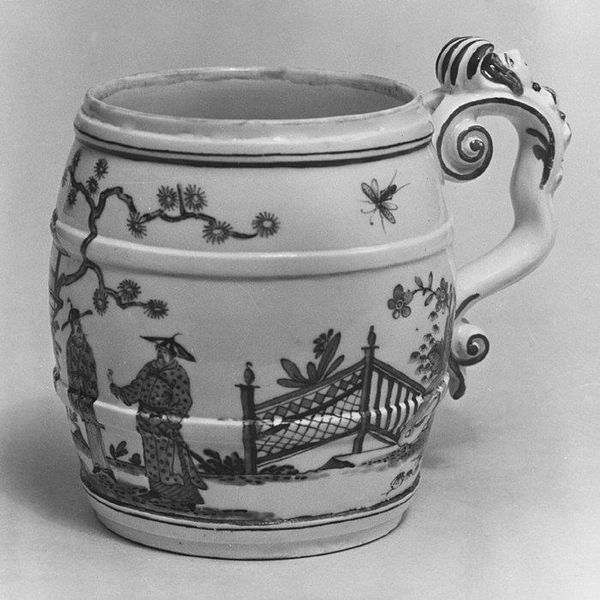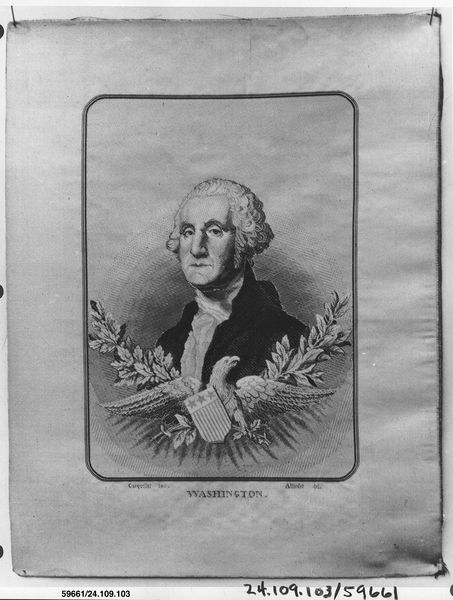
ceramic, earthenware
#
portrait
#
black and white photography
#
ceramic
#
black and white format
#
earthenware
#
black and white
Dimensions: H. 2 1/2 in. (6.4 cm); Diam. 3 1/2 in. (8.9 cm)
Copyright: Public Domain
This mug was made by Ralph Hall & Son around 1840, using transfer-printed earthenware. This process, which involves transferring a design from an engraved plate to the ceramic surface, democratized access to decorative objects. The mug's material, earthenware, is relatively inexpensive and easy to produce on a mass scale. The transfer printing is significant as it allowed for detailed imagery, like the portrait of George Washington seen here, to be reproduced quickly and accurately, a departure from the hand-painted ceramics of the past. This speaks volumes about the evolving modes of production and consumption in the 19th century, and illustrates a shift towards industrialization, where items were no longer unique artistic endeavors but commodities for a growing market. Consider the division of labor involved; from the miners extracting raw materials, to the factory workers shaping and printing the mug, and the consumers purchasing it. The mug is more than a vessel; it's a microcosm of the burgeoning capitalist system that transformed societies.
Comments
No comments
Be the first to comment and join the conversation on the ultimate creative platform.


